Researchers studying these abandoned, centuries-old nests in Spain found a wealth of other human-made objects, including baskets, a crossbow bolt, a wooden lance, and a slingshot.
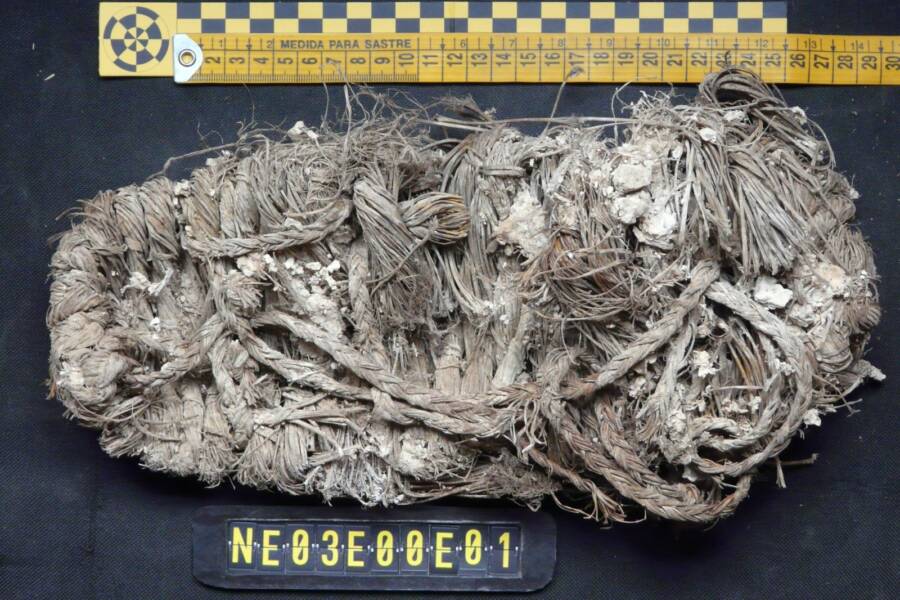
Antoni MargalidaThe sandal, found in the nest of a bearded vulture in southern Spain, is believed to be about 650 years old.
Researchers have uncovered more than 200 human-made artifacts from the nests of bearded vultures in southern Spain, including a 650-year-old sandal made of woven grass.
Depending on the specific area, the bearded vulture has been extinct in southern Spain for between 70 and 130 years. However, their nests, which are nestled high up on the sides of mountains, largely remain intact.
Researchers used historical records and even spoke to older, long-time residents with firsthand knowledge in order to locate these nests. In total, they analyzed 12 different sites, discovering bone remains, eggshell fragments, and so many human relics that experts are calling these nests “natural museums.”
The Troves Of Human-Made Objects Found In Centuries-Old Vultures’ Nests In Spain
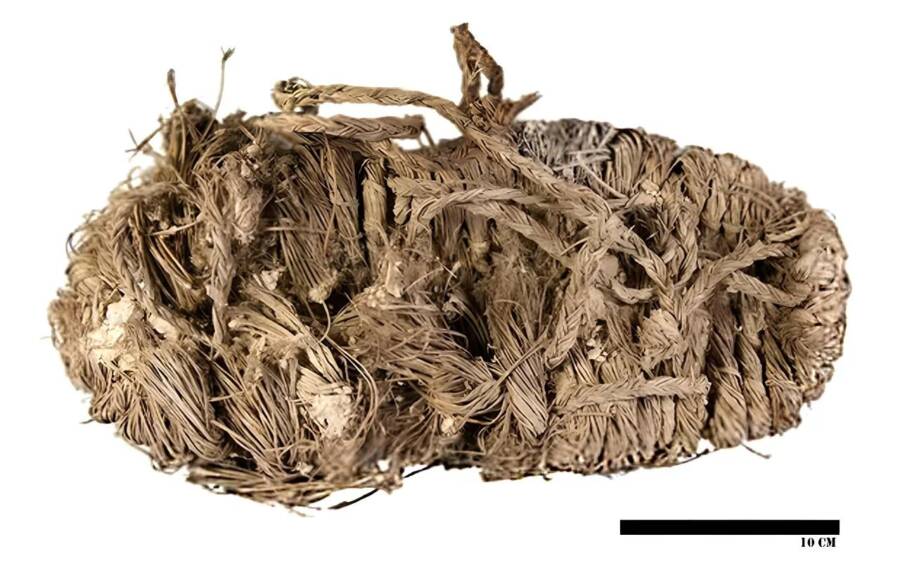
Antoni MargalidaThe sandal was one of many items found in these nests that was made of woven esparto grass.
Bearded vultures’ nests excel at keeping artifacts intact for centuries. They build their nests in cliffside caves that go untouched by humans and have cool, dry microclimates that create great natural conditions for preservation.
Researchers described all the objects that were uncovered from these nests – human-made or otherwise – in a new study recently published in Ecology.
A majority of what researchers found was related to the vulture’s diet. Specifically, they found 2,117 bone remains and 86 hooves, as well as 43 eggshell fragments. Bearded vultures are the only vertebrates on Earth that eat mostly bone.
However, the remaining nine percent of the recovered objects were human-made.
Researchers unearthed 72 pieces of leather, 129 bits of cloth, and 25 items made from esparto grass. They found a slingshot, ropes, fragments of baskets, a crossbow bolt, a wooden lance, and horse equipment. One of the nests even contained a complete sandal that dates back at least 650 years.
Researchers used radiocarbon dating to estimate the ages of the artifacts. In all, the human-made objects in the nests were between 150 and 750 years old.
Perhaps the most strikingly intact among them is the sandal, made of grass and twigs. Far older sandals have been unearthed across Europe in recent years, including Roman models in Norway and Germany, as well as another set found in Spain that dates back 6,200 years and may be the oldest footwear ever found on the continent.
However, none have an archaeological provenance quite as unique as being found in the nest of a bone-eating vulture. But although this creature may sound fearsome, it’s actually long been endangered across much of the world.
The Precarious Future Of The Bearded Vulture
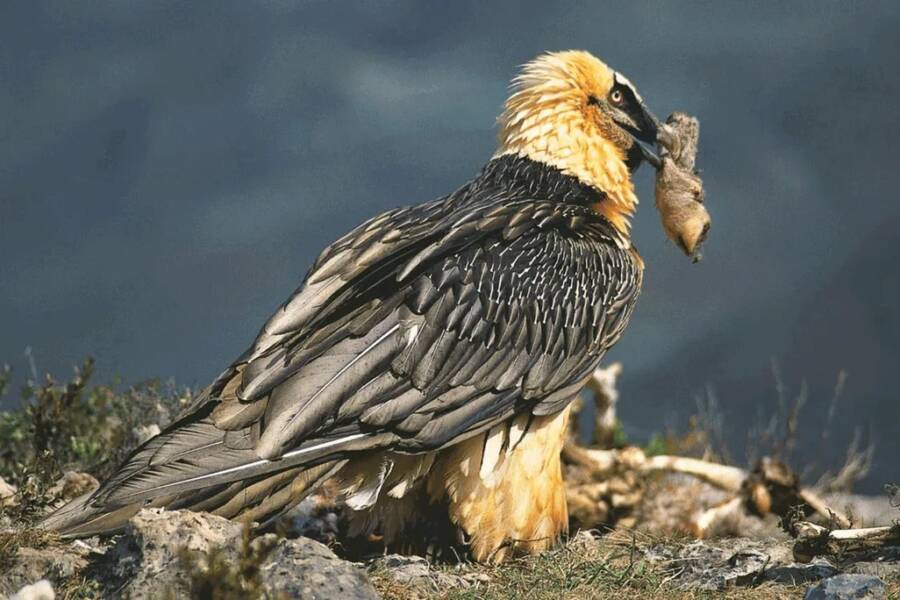
Antoni MargalidaThe bearded vulture is extinct in southern Spain, but still exists elsewhere in Europe and around the world.
It’s possible that studying the materials found in these nests will help with the protection of these birds elsewhere in the world. The eggshells may reveal whether the animals were exposed to toxic substances or pesticides, while the bones will give researchers an idea of how their diets changed over time.
“We have several ideas to analyze in the future,” lead author Antoni Margalida told National Geographic. “I think that this material will offer a lot of possibilities.”
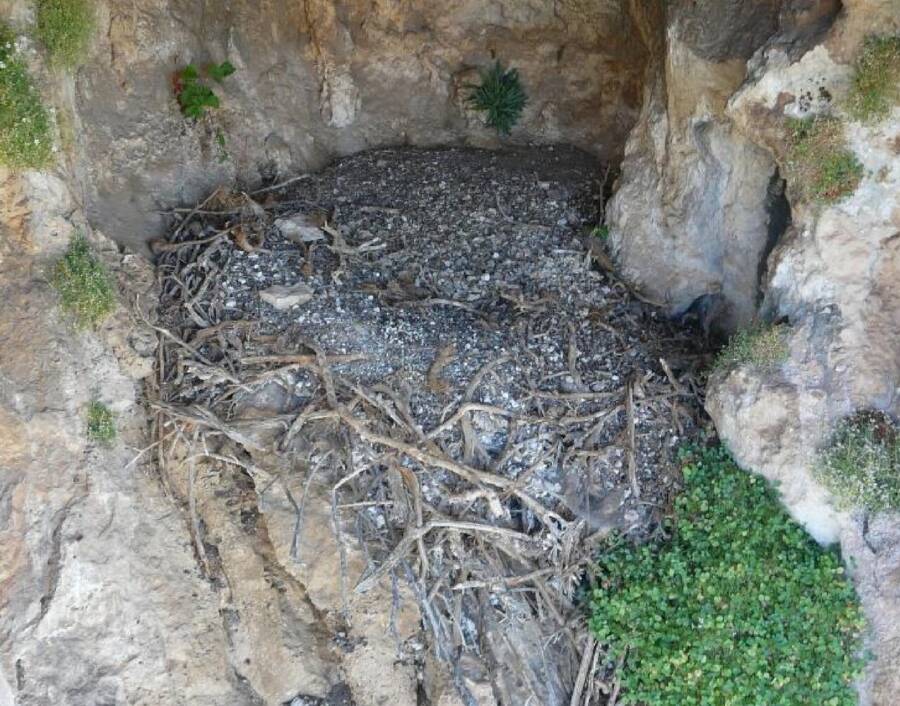
Sergio CoutoOne of the bearded vulture nests in Spain that was investigated as part of this newly-published study.
The bearded vulture is Europe’s rarest vulture species. Throughout the 19th and 20th centuries, these birds were hunted to that point that they practically disappeared from Europe’s southern mountain ranges where they were once abundant.
In the 1970s, conservation and reintroduction efforts ramped up. However, this bird is still extinct in southern Spain and is considered an endangered species in the Mediterranean region.
It’s estimated that only about 180 to 249 bearded vultures remain in that region today. Meanwhile, there are somewhere between 1,675 to 6,700 bearded vultures left on the entire planet.
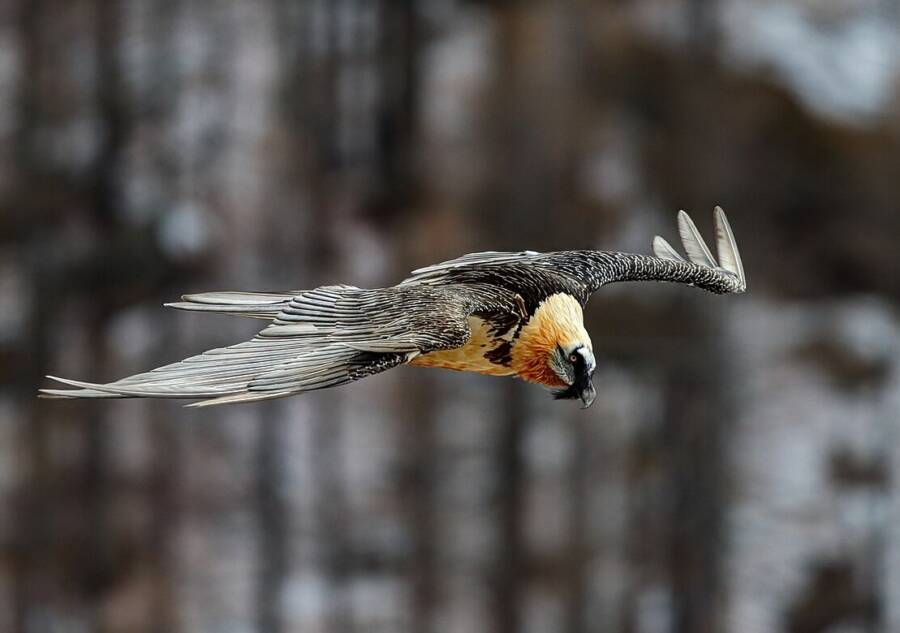
Wikimedia CommonsA bearded vulture in flight over Gran Paradiso National Park in Italy.
They’re not the only birds known to use human-made objects in their nests. It’s not uncommon for scientists to retrieve seemingly random human-made objects from various birds’ nests.
Earlier this year, in fact, scientists found human trash in Eurasian coot nests in Amsterdam. They recovered a candy wrapper that referenced the 1994 FIFA World Cup and a 1996 McDonald’s McChicken container.
After reading about the centuries-old human artifacts found in bearded vultures’ nests, learn about the birds in Europe that are using anti-bird spikes to make their nests. Then, read about the radioactive wasps’ nests found in South Carolina.





